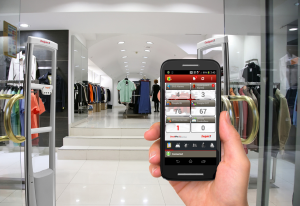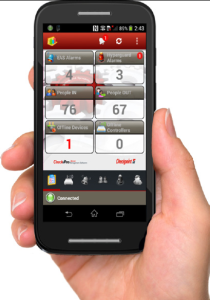 You’ve got a great EAS system. You’re stopping shrink and keeping profits in your store. You’re happy. Losses are down and you might actually make your sales targets. So it’s like Ronco Rotisserie where you just “set it and forget it,” right? Not quite. You have a few things to do if you want that system to provide you years and years of a return on investment.
You’ve got a great EAS system. You’re stopping shrink and keeping profits in your store. You’re happy. Losses are down and you might actually make your sales targets. So it’s like Ronco Rotisserie where you just “set it and forget it,” right? Not quite. You have a few things to do if you want that system to provide you years and years of a return on investment.
While a good EAS tower won’t need much in the way of maintenance, you have to make sure it is in working order on a daily basis. Sometimes, I’ve found that with all the customer traffic in and out, kids running in and out of the store and even those with malicious intent, that often the towers get un-powered (unplugged). Part of your daily routine should be to test and verify the towers. This is incredibly easy to do; just pass a tag through the gate. If it alerts, well, your system works. If it doesn’t, then you have a problem! I have my managers do this each and every morning.
You would think that this would be simply, even a common sense practice, right? Well, you’d be surprised. I had a store a while back install a new EAS system. It was a system that had the sensors built in to the floor. You’d never know that it was there. Well, that store manager sent in maintenance request after maintenance request hollering and screaming that the system wasn’t working. We’d of course send a tech out, who would confirm it was functioning properly and a few days later, the store manager would be yelling again that it wasn’t alarming when tags were passing through.
I decided to stop by the store and see for myself. As soon as I walked in the doors, I saw the problem. This store manager was displaying pallets of aluminum boiling pots up against the front doors, which put them right over the sensors on the ground. When the techs came to inspect the system, they moved them out of the way. The store manager then challenged me on where else he could display those pots… but that’s for another article.
Bottom line here is that you need to inspect your system and test it daily. Whether it be a manger, or a member of your sales team, you’ve got to make sure that it’s working and there’s nothing impeding its ability to stop shrink. A car will only drive it has gas it, right? Same goes for your EAS system!

 In the past when managers discussed employee theft they mostly talked about the tangibles. They talked about their problems with staff stealing product, supplies and money – the physical things which can be touched and seen.
In the past when managers discussed employee theft they mostly talked about the tangibles. They talked about their problems with staff stealing product, supplies and money – the physical things which can be touched and seen.

 Burnout is an on-going, serious issue in the retail industry. The industry is so immense and pervasive that all of us, even if we’ve never working in retail, have knowledge of and experience with the problem.
Burnout is an on-going, serious issue in the retail industry. The industry is so immense and pervasive that all of us, even if we’ve never working in retail, have knowledge of and experience with the problem.